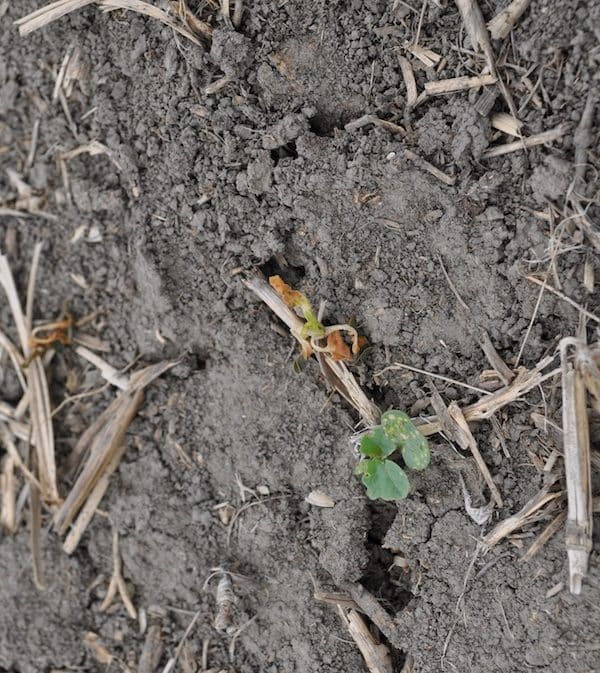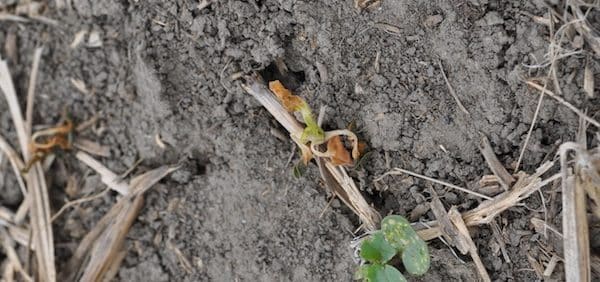
Many situations can lead to patchy canola emergence and growth patterns. Here are our top 10 for this year…
1. Dry topsoil conditions. Soils across many parts of the Prairies were dry all through May and into the first part of June. Emergence tends to be lower and slower in dry conditions.
2. Flea beetles. These insects tend to start on field edges, but by now will be all over the field. They will contribute to stand thinning, but tend not to be as patchy as cutworms. More.
3. Frost. Plant losses from frost can occur in patches, often influenced by elevation and by residue.
4. Cutworms. Early season cutworm damage usually occurs in patches.
5. Seed placement and population issues influenced by seeding speed, seed depth and seed rate.
6. The seeding tool itself. Old worn openers can make for inconsistent seed depth, poor seed placement or poor seed-fertilizer separation. New drills can also cause issues with seeding rates, fertilizer rates, seeding depth and packing pressure as growers learning how to set them. Repeatable patterns through the field are often clear signs of some machinery problem. More.
7. Too much fertilizer with the seed. Dry conditions increase the damage risk from seed placed fertilizer. Moisture helps dilute and diffuse fertilizer throughout the seed zone. More.
8. Soil moisture-holding capacity. Some fields have highly variable soil types, with clay patches holding moisture better than sandy and loamy patches. This variable moisture holding capacity will show up as patches in fields short of moisture. Note that fields with variable soil types can also have patches that result from nutrient deficiencies, salinity and other factors specific to soil condition.
9. Seedling diseases. Variable soil moisture and seeding depth, for examples, can influence the severity of seedling disease damage within a field. More.
10. Tillage. Tillage can improve residue management and create a warmer seedbed early in the season, but it also makes topsoil much drier. Poor residue management can create a patchy field, but it seems that this year tilled fields have fared worse with the dry conditions across much of the Prairies.
Further reading:

